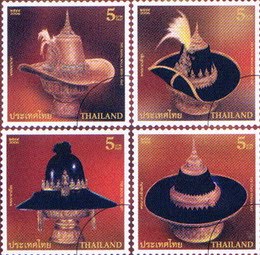Postage Stamp Articles : Stamp Collecting For Beginners - A Guide to Starting a Stamp Collection
Learn how to obtain, clean, dry, and preserve stamps. This article helps beginners to the hobby of Philately with a few hints to help a child begin collecting stamps.
Email has slowed down the use of postage stamps in our country, but stamp collecting is as popular a hobby as ever. Beginners will still enjoy the variety and fun of a stamp collection. Collecting postage stamps is called Philately.
What is a Philatelist?
Philatelists are stamp collectors. Some collect as an investment. They want stamps to sell and trade, but you can collect stamps simply for the joy of it! The word Philatelie comes from the greek words Phil plus ateleia, which meant tax exemption or tax immunity. The stamp exempted, not the sender of the letter, but the recipient of the letter, from paying a mailing fee or tax.
Stamp Collecting Supplies
To start will stamps, you will need only a few small things.
- Stamps
- A glass soaking dish
- scissors
- water
- paper towels
- A stamp drying book
- weights
Finding Stamps for Your Collection
- Ask friends and family members to save up old envelopes and interesting stamps for you.
- Buy stamps packets at hobby stores.
- Stamp stores sell pails of stamps for as low as three dollars.
- Dealers sell stamps.
- Internet sources like eBay sell stamps.
- New stamps can be purchased at the post office.
Sorting, Soaking, and Drying Stamps
Most stamps you can get easily and cheaply will be on paper—on old letter envelopes. Sort them before you take them off the paper to keep from tearing them. You must get them loose from the paper without damaging them.
Trim the Stamps
Never tear them off. This can destroy a wonderful stamp. This hobby requires patience. Cut carefully around each stamp leaving all the serrated edging plus about an inch or so space around the stamps.
Soak the Stamps
Put a half inch of slightly warm water in a glass baking pan or a glass pie pan. Don’t use hot water as it will make ink run or the stamp start to disintegrate. Lay the stamps face up in the water. They will need to soak for from 15 minutes to as long as 2 hours. (The new self adhesive stamps are the tough ones.)
Stay close by and watch the stamps. The ink of the postmark or the color of a colored envelope paper may begin to run and could ruin your stamp. If this happens remove the stamp and blot it dry and then try floating it lightly on cold water shallow enough so only the paper is in the water. Do only one at a time to avoid ruining the batch. This should minimize the damage.
Lift the Wet Stamps
Use your fingers rather than a tool, like tongs, to handle the wet stamps as they may tear easily. When the paper is loosened enough to lift the stamp, carefully pull the stamp off the paper. Clean any remaining glue from the back of the stamp by rubbing your fingers gently over the glue. If it clings to the backing, soak longer. Don’t go off and forget your stamps. Set a timer or stay close by to keep your eye on them.
Drying Process
Lay the wet stamps carefully face down on a paper towel. Blot gently with another paper towel. Don’t use newspaper because ink in the newspaper may leech onto the stamp and spoil it.. Next lift the stamp and place it in your drying book.
Stamp Drying Books
Inexpensive stamp drying books can be purchased at the hobby store and consists of alternating blotter paper pages and plastic pages. You can make your own with absorbent paper and plastic sheets and some big books for weight. Dry the stamps in the drying book overnight.
Air Dry
Take them out of the dryer book and lay them face up on a paper towel again to air dry for a hour or more.
Arrange in Album
When the stamps are thoroughly dry and nice and flat, put them into your collecting book. Hobby stores and the Post Office sells such books. If you choose a photo album be aware that the plastic sheets may stick down to the stamps and that they may discolor the stamps over time. They can usually be found at teacher stores and book stores also. Dover books carry some stamp collecting books.
Saving Postmarks
In many cases the postmark or cancellation mark since it bears a date and the name of the city where it was mailed may be as interesting as the stamp. When you trim the paper from the stamp, record the date and city name, if they will not show on the face of the stamp. When you add the stamp to your book, jot the postmark facts with it. Many Philatelists also collect postcards.
Clubs for Collectors
The American Philatelist Society is a nationwide club for stamp collectors. Your local postmaster may have a listing of local stamp clubs. You can start your own Philatelist Club with friends who are interested in stamps. Meet once a month and show the new stamps you have preserved. It is fun to trade duplicates too. Learn together about stamps, stamp collecting methods, and products.
Philately is a great hobby - why not start today?


COMMENTS :
0 comments to “Stamp Collecting For Beginners”
Post a Comment